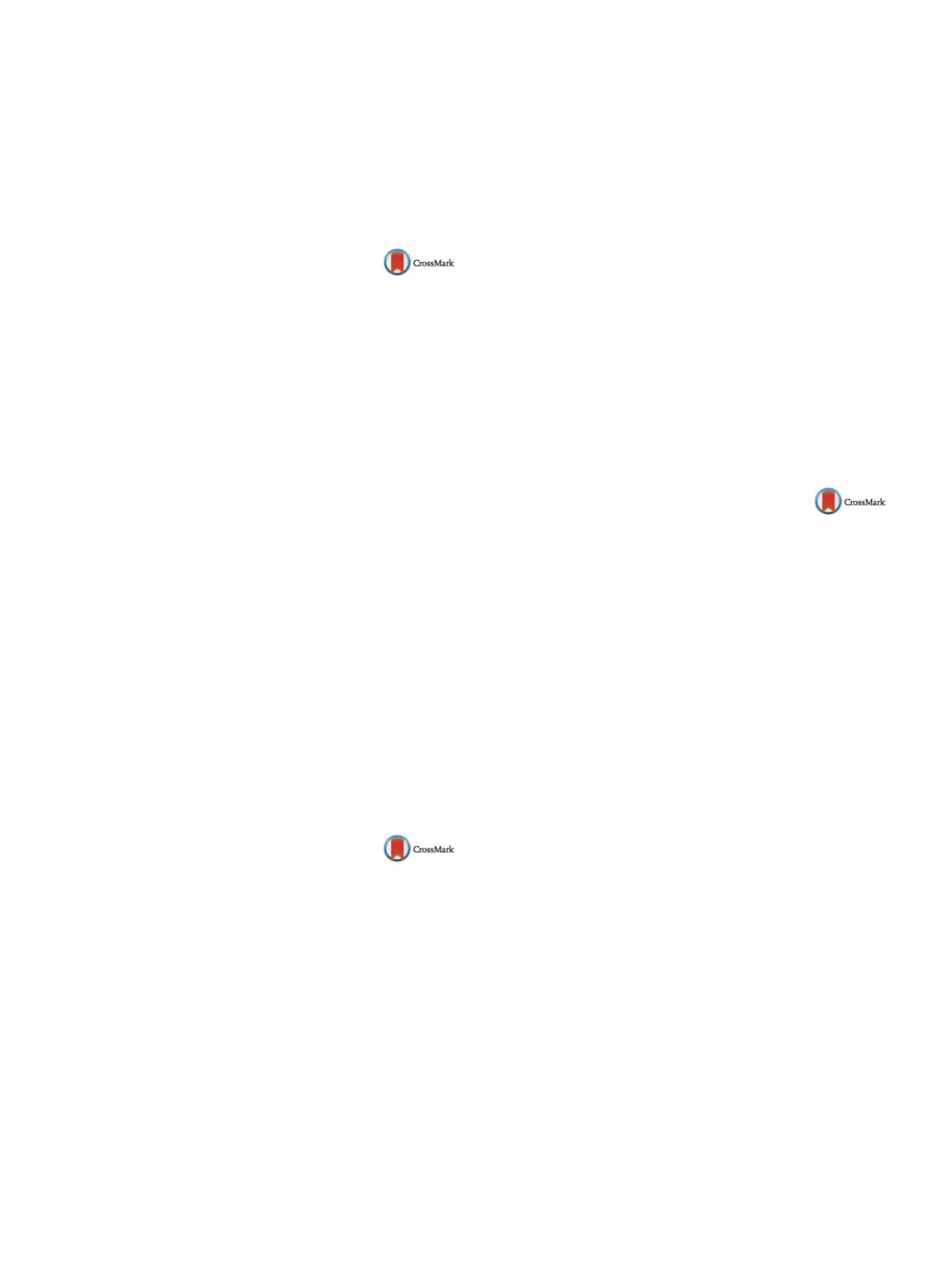

S522
25th European Congress of Psychiatry / European Psychiatry 41S (2017) S521–S582
Conclusions
There appears to be a biological link between DD and
MS, with a bidirectional interference in the clinical course, progno-
sis and treatment response. Thus, both conditionsmust be correctly
identified and treated.
Disclosure of interest
The authors have not supplied their decla-
ration of competing interest.
http://dx.doi.org/10.1016/j.eurpsy.2017.01.691EV0362
Correlation between depression and
happiness among Kuwait university
students
G. Baqer
Kuwait University, Department of Psychology, Faculty of Social
Sciences, Kaifan, Kuwait
Background
The Beck Depression Inventory (BDI-II) has become
one of the most widely used instruments for evaluating the sever-
ity of depressive symptoms in psychiatric patients and in normal
populations. The Oxford Happiness Questionnaire (OHQ) has been
derived from the Oxford Happiness Inventory (OHI). The OHI
follows the design and format of BDI-II, which provided, when
reversed, a set of 20 multiple-choice items relevant to subjective
well being. Further items were added to cover aspects of happiness
and 29 items were retained in the final scale. OHQ was translated
into Arabic for the first time in the present study. The aim of the
study is to examine the correlation between depression and hap-
piness.
Materials and methods
BDI-II (alpha .87) and the Arabic version
of OHQ (alpha .92) were completed by a sample of (380) Kuwait
university students (180) males and (200) females with mean age
of 22.19
±
2.8 years old. Pearson correlations were calculated.
Results
Significant (
P
> 0.01) reverse correlation was found
between depression and happiness (
r
= –54).
Conclusion
Although significant negative relationship existed
between BDI-II and OHQ, the coefficient for determination of this
correlation shows that nearly only half of depression changes are
described and assessed with happiness score! It seems that the
two psychometric tools do not completely stand against each other.
However, further evaluation of this relationship is needed.
Disclosure of interest
The author has not supplied his/her decla-
ration of competing interest.
http://dx.doi.org/10.1016/j.eurpsy.2017.01.692EV0363
Alternating intravenous racemic
ketamine and electroconvulsive
therapy in treatment resistant
depression: A case report
L. Bartova
∗
, A. Weidenauer , M. Dold , A. Naderi-Heiden ,
S. Kasper , M. Willeit , N. Praschak-Rieder
Medical University of Vienna, Department of Psychiatry and
Psychotherapy, Vienna, Austria
∗
Corresponding author.
Introduction
Treatment resistant depression (TRD) affecting
approximately 10–30% of all depressed patients often remains mis-
diagnosed and undertreated, leading to a higher risk of relapse
and suicide. Electroconvulsive therapy (ECT) and sub-anesthetic
ketamine have repeatedly shown to be effective in the TRD pop-
ulation. Administering ketamine as an anesthetic component to
augment antidepressant efficacy of ECT has been proven inconclu-
sive, while a combination of alternating ECT and ketamine has not
been investigated yet.
Case report
We present a severely depressed and chronically
suicidal female inpatient who failed multiple antidepressant treat-
ment attempts, requiring frequent psychiatric admissions. Since
available conventional as well as non-conventional antidepres-
sant treatment strategies were nearly exhausted, we employed
a combination of ECT (bilateral stimulation up to 150%) 2–3
times/week, while intravenous racemic ketamine (up to 75mg per
infusion) was administered on ECT free days 2–3 times/week. Con-
sequently, robust anti-suicidal and antidepressant effects could
be observed already during the first treatment week. The tem-
porarily occurring subjective forgetfulness disappeared after the
last ECT. Summarizing, we employed 9 ECT treatments and 7
ketamine infusions leading to a stable psychopathological state
even after discharge frompsychiatric inpatient care. In order to pre-
vent relapse a maintenance-therapy comprising ECT once monthly
and 2 ketamine infusions (up to 100mg per infusion) administered
on the day before and after ECT was established.
Conclusions
In our patient alternating ECT and intravenous
racemic ketamine were proven safe and long-term effective after
numerous failed antidepressant trials including ECT and ketamine
alone. Wemay hence encourage clinicians towiden their therapeu-
tic armamentarium in severe TRD.
Disclosure of interest
The authors have not supplied their decla-
ration of competing interest.
http://dx.doi.org/10.1016/j.eurpsy.2017.01.693EV0364
Relationship between pain-coping
strategies, catastrophizing to pain and
severity of depression
B. Batinic
1 ,∗
, J. Nesvanulica
2, I. Stankovic
21
Clinic for Psychiatry Clinical Centre of Serbia, Faculty of Philosophy
Department of Psychology, Belgrade, Serbia
2
Faculty of Philosophy, Department of Psychology, Belgrade, Serbia
∗
Corresponding author.
Introduction
Studies have shown that somatic pain influences the
severity of major depressive disorder (MDD), and could be mod-
erated through pain coping strategies and not catastrophizing to
pain.
Objectives
The aim of the study was to ascertain the correla-
tion between pain coping strategies, catastrophizing to pain and
severity of depression.
Methods
The study sample consisted of 82 patients diagnosed
with MDD, aged between 18 and 65 years old (M= 46.21). Assess-
ment instruments included The Beck Depression Inventory-II
(BDI-II), The Brief Pain Inventory-Short Form-BPISF (consisting of
two subscales: BPI1-intensity of pain, and BPI2-interference with
daily functioning), The Vanderbilt Pain Management Inventory-
VPMI (consisting of active-VPMIAC and passive pain coping
mechanism subscales-VPMIPC) and The Pain Catastrophizing
Scale-PCS (consisting of subscales of rumination, exaggeration and
helplessness).
Results
The average BDI-II score was 27.21 (SD = 11.53); the aver-
age score at BPI1 was 2.99 (SD = 2.83) and 3.35 (SD = 3.26) at BPI2;
the average scores on the active coping mechanism subscale was
20.72 (SD = 4.87), and on the passive coping mechanism subscale
34.05 (SD = 7.86); the average catastrophizing scale scorewas 28.78
(SD = 10.72). Active mechanism of pain coping has shown sig-
nificant negative correlation with depression (
r
= –0.227,
P
> 0.05)
while passivemechanismof pain coping has shown significant pos-
itive correlation with depression (
r
= 0.269,
P
> 0.05). Intensity of
depression was significantly positively correlated with intensity
of catastrophizing to pain (
r
= 0.358,
P
> 0.01) and its derivatives:
rumination, exaggeration and helplessness.
Conclusion
Interventions focusing on targeting catastrophizing
to pain and pain coping mechanisms should be considered in the
treatment of patients with MDD with somatic pain.
Disclosure of interest
The authors have not supplied their decla-
ration of competing interest.
http://dx.doi.org/10.1016/j.eurpsy.2017.01.694

















